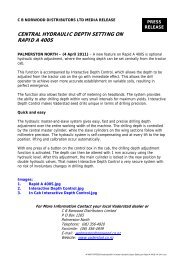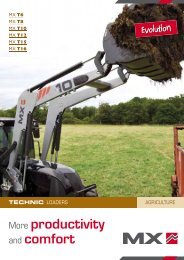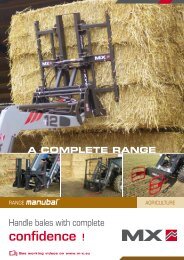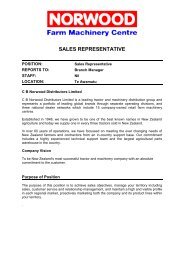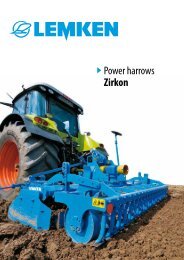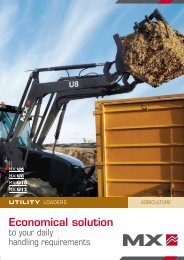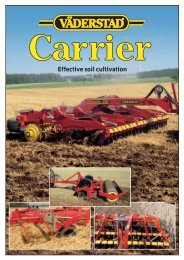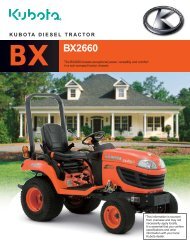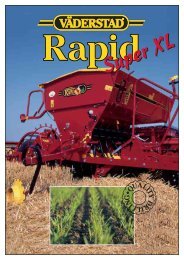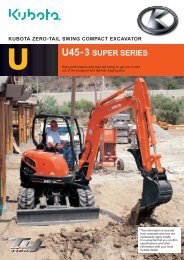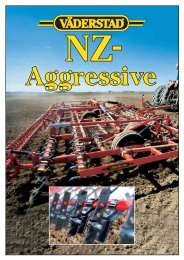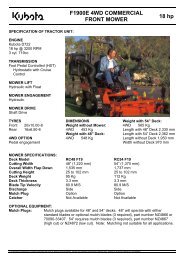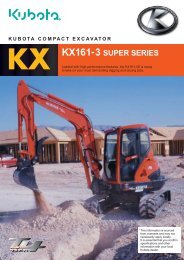Vaderstad TopDown Brochure - LiveUpdater
Vaderstad TopDown Brochure - LiveUpdater
Vaderstad TopDown Brochure - LiveUpdater
Create successful ePaper yourself
Turn your PDF publications into a flip-book with our unique Google optimized e-Paper software.
orks with natureHow to begin!Even if the aim is clear, the route toreduced tillage can be hard to find.Here are some tips to help you onyour way.Straight after the combineA first pass should be made as soonas the combine has left the field.Such quick action has many advantages.The soil is softest just afterthe crop has been harvested andthe machine can easily work its waythrough. The firmed soil left by thisfirst pass also forms a barrier toevaporation, so soil water is conserved.In addition, weed seeds andvolunteers germinate at once, sothey can be controlled mechanicallyor chemically at a later stage.Loosen if neededA second pass is always of benefit iftime allows. The first pass starts thedecomposition of harvest trash,while the second can be dedicatedto achieving a particular outcome. Ifthe soil structure at depth is good,the soil does not need to be loosened,so the second pass can be arepeat of the first. However, if thesoil is in need of loosening at depthbecause of hardness or a pan, thesecond pass can well be devoted tobreaking up this dense layer.Worms thriveBetter drainageA clear effect of converting to reduced tillageis the improvement in the earthwormpopulations in the soil. This change occursrather soon – after only three years of reducedtillage to 10 cm, the quantity of earthwormsis doubled in terms of both numbersand weight compared with ploughed soil.This is particularly true for the importantearthworm species that dig vertical channelsin the soil. They look for their food atthe soil surface and are favoured if harvesttrash is concentrated at the surface and notdistributed to ploughing depth.When the soil is not loosened by theplough each year, some compaction candevelop in the lower topsoil. On theother hand, the plough pan is graduallyloosened up. The soil pores in the transitionbetween topsoil and subsoil remainintact when they are not disrupted byploughing. They interconnect to create anetwork, which means that drainage ofwater through the soil gradually improvesover time. This effect can be enhancedby the activity of earthworms, whichimproves both drainage and aeration.The best way of deciding whatdeep tillage is needed is to dig ahole by hand in the field. The soilstructure can then be examinedand assessed and the diagnosis canbe used to decide the need forloosening.



